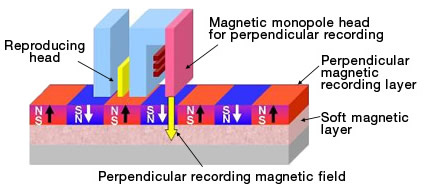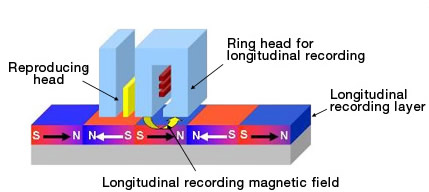 |
| 1991 |
| The world's first hard disk drive to use glass platters |
| In 1991, Toshiba was the first *1 company in the world to sell hard disk drives that use glass platters. Such hard disk drives controlled platter surface unevenness better than the contemporary hard disk drives that used aluminum platters, enabling the head float height over the hard disk surface to be controlled within 0.1 μm or less. As a result, Toshiba achieved a recording density of 155 kbit/mm2 (100 MBPSI, 2.000 TPI, 51.9 kBPI). |
|
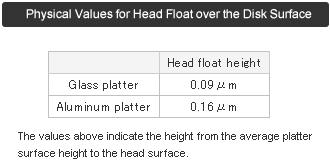 |
|
| 1991 |
| The world's first hard disk drive to use glass platters |
|
In 1997, Toshiba was the first company in the world to sell hard disk drives that use giant Magneto Resistive (GMR) heads.
GMR is a physical phenomenon in which greater changes in electrical resistance to the magnetic field are seen than in the conventional Magneto Resistive effect and was first discovered by researchers in Germany and France in 1988.
A GMR head is a magnetic reproducing head that makes use of this physical phenomenon. By using nano technology to significantly change the electrical resistance of multiple alternating layers of magnetic and non-magnetic thin film, each several nanometers thick depending on the magnetic field of the media, Toshiba achieved highly sensitive recorded data reproduction unimaginable with conventional heads. |
By using Toshiba's proprietary CoFe alloy, after only ten years of research and development we were the first in the world to install GMR heads in HDD products.
In 2007, the researchers who discovered GMR received the Nobel Prize in Physics for their contributions to drastically increasing HDD capacity, which grew at a rate of 100% annually since the year of their discovery. |
|
| 2001 |
| The world's first automotive hard disk drive |
In 2001, Toshiba was the first in the industry to sell automotive HDDs.
Toshiba made automotive HDDs practical by expanding both the low and high ends of the operating temperature range by controlling recording current and devising a design to improve recording density, by developing dedicated automotive filters to avoid internal condensation, and by significantly improving vibration resistance.
Toshiba commenced full-fledged mass production of hard disk drives featuring this technology in 2001 and proceeded to acquire overwhelming market share in the automotive HDD market in 2003.
With automotive HDDs, functions unthinkable in previous models were realized, such as car navigation software capable of high-speed searching of enormous quantities of mapping data as well as in-car music servers capable of storing large numbers of songs for instant playback. In this way, Toshiba contributed to the advancement of the information society in mobile environments. |
|
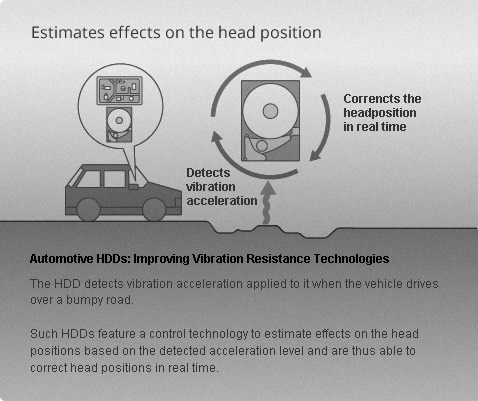 |
|
|
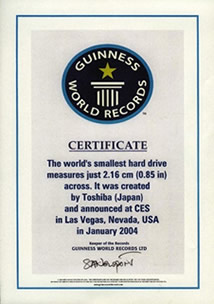 |
| 2004 |
| The world's smallest (0.85-inch) hard disk drive |
In 2004, Toshiba began selling what was then the world’s smallest (0.85-inch) hard disk drive.
By making full use of its HDD technology for realizing smaller drives, Toshiba was able to release a 0.85-inch HDD (thickness: 3.3. mm/5 mm), which is the same size as an SD card. These hard disk drives were installed in compact, portable devices needing large storage capacities, such as mobile phones and music players.
Unfortunately, though we no longer manufacture or sell this product, it served to suggest the possibilities of compact hard disk drives and thereby contributed to the advancement of HDD technology. |
|
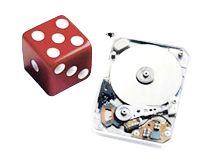 |
|
| 2004 |
| The world's first perpendicular magnetic recording hard disk drive |
|
|
In 1997, Toshiba was the first company in the world to sell hard disk drives that use giant Magneto Resistive (GMR) heads.
GMR is a physical phenomenon in which greater changes in electrical resistance to the magnetic field are seen than in the conventional Magneto Resistive effect and was first discovered by researchers in Germany and France in 1988.
A GMR head is a magnetic reproducing head that makes use of this physical phenomenon. By using nano technology to significantly change the electrical resistance of multiple alternating layers of magnetic and non-magnetic thin film, each several nanometers thick depending on the magnetic field of the media, Toshiba achieved highly sensitive recorded data reproduction unimaginable with conventional heads. |
By using Toshiba's proprietary CoFe alloy, after only ten years of research and development we were the first in the world to install GMR heads in HDD products.
In 2007, the researchers who discovered GMR received the Nobel Prize in Physics for their contributions to drastically increasing HDD capacity, which grew at a rate of 100% annually since the year of their discovery. |
|
|











